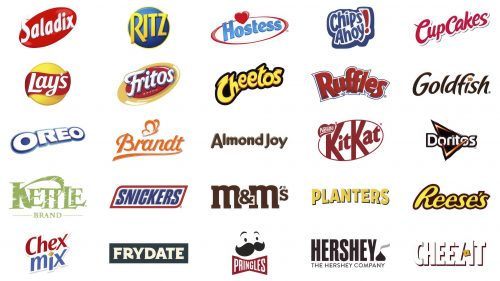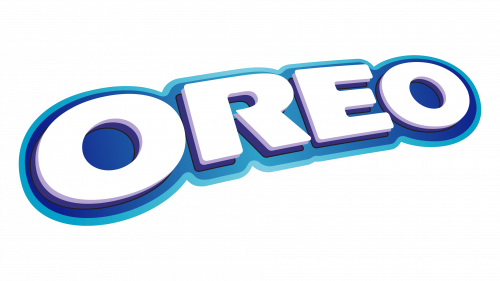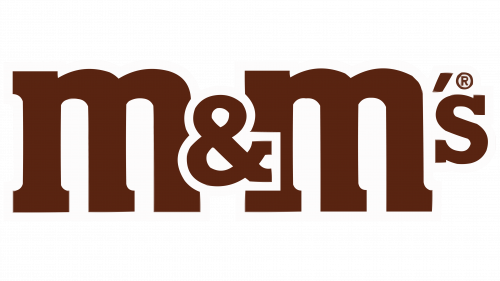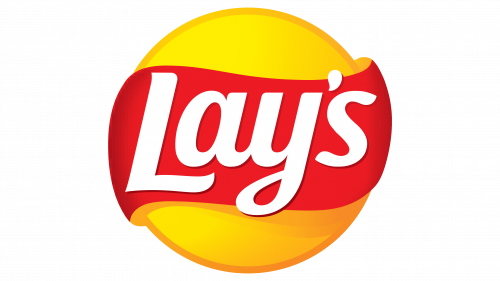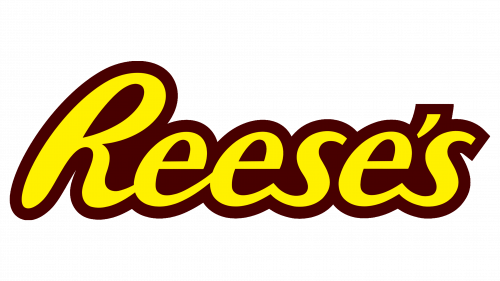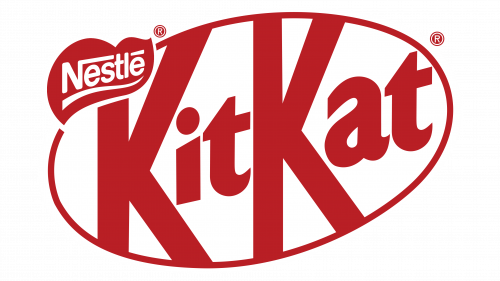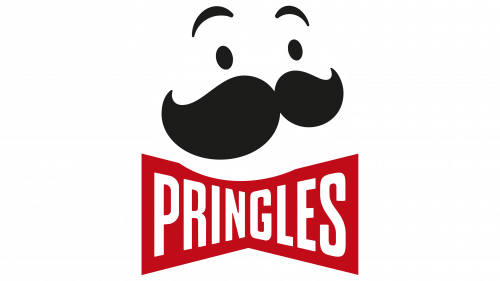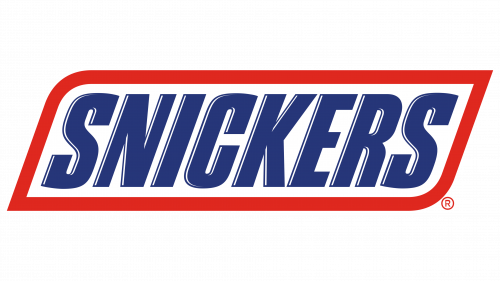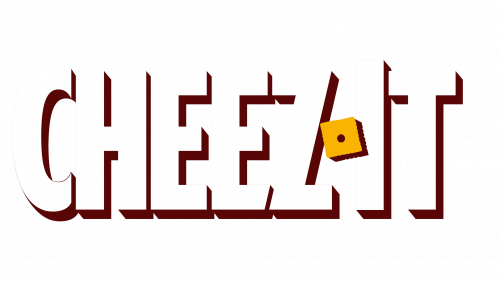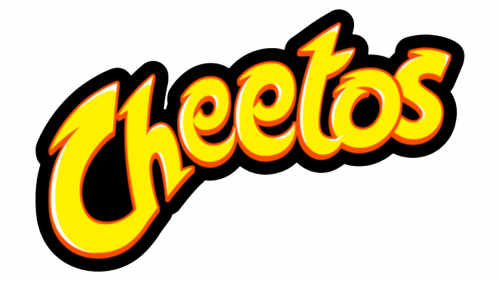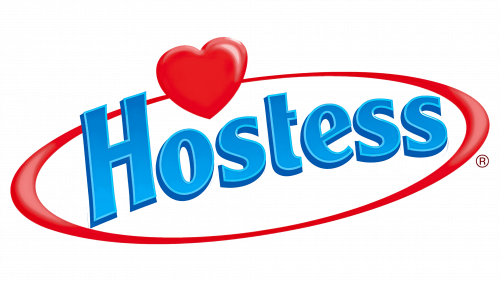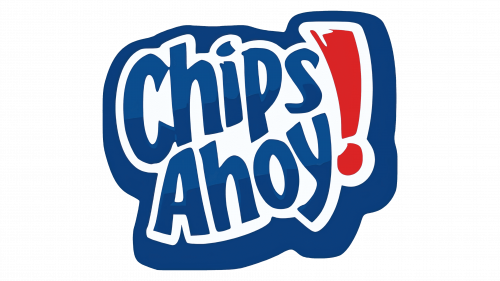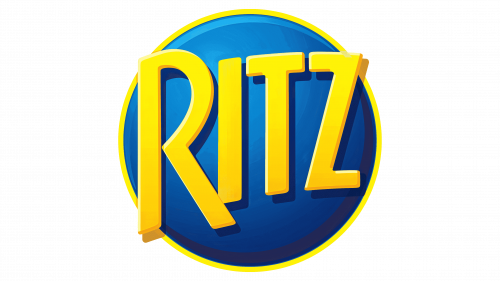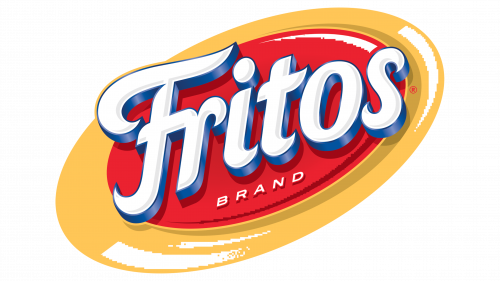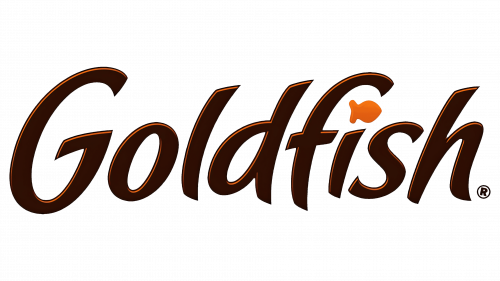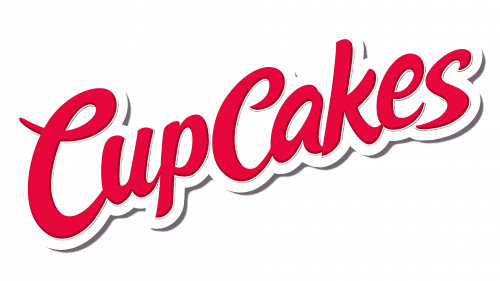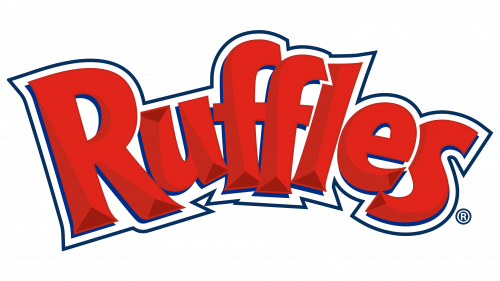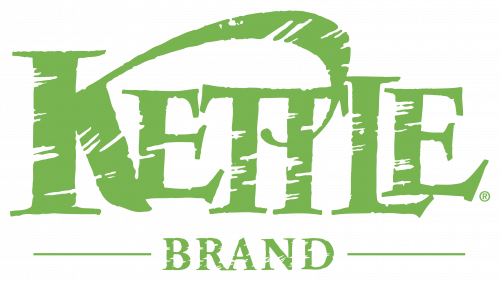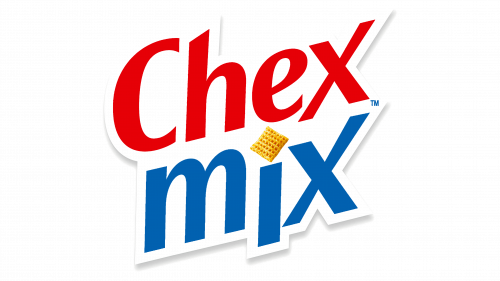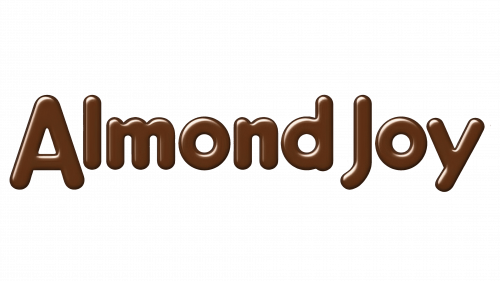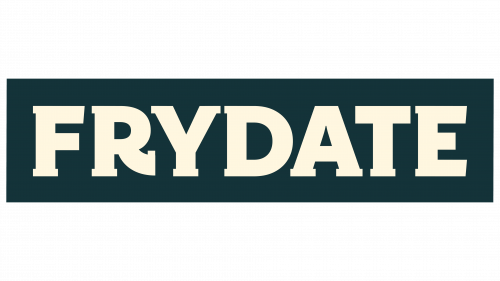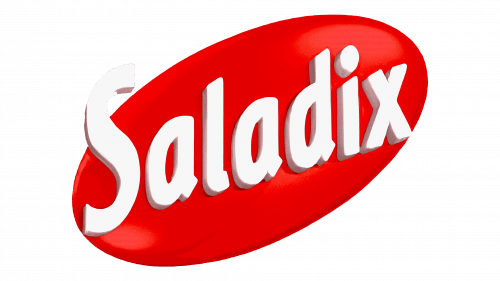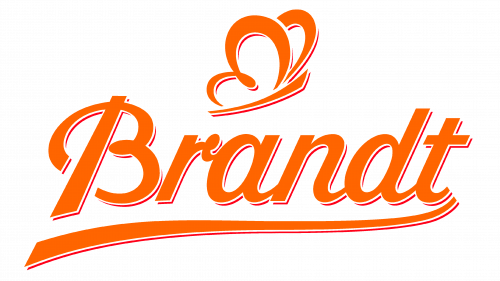Snacks like potato chips, chocolate, and mustard on sandwiches are more than just tasty. They remind us of special moments and show how important brands and logos are when we choose what to eat. These brands have become symbols of culture and innovation known worldwide.
Snacks, from popcorn to chocolate bars, are loved by people of all ages, including millennials and boomers. In the US, people eat a lot of sweets every year, with Hershey’s Kisses being a big favorite, especially during the holidays. Even though people’s interest in big meals might change, the love for snacks stays strong. This is because snacks keep coming out in both new and familiar flavors.
Brands are more than just names or products; they stand for an experience and a promise of quality. Their logos, like the Milky Way design or the Jif peanut butter font, connect with us instantly. They tell us about the brand’s reliability and taste and sometimes even make us feel nostalgic.
Companies like Campbell, known for its soups, and Smucker, known for its jams, have evolved with time. They keep up with changing tastes, health trends, and the demand for healthier options by offering gluten-free, non-GMO, and sugar-free products without losing the taste we love.
The snack industry isn’t just about the food; it’s about the stories behind these foods. From humble beginnings to creating energy drinks and movie snacks like Reese’s Pieces, snack brands work hard to satisfy our global cravings. They make sure that every snack is an important part of our culture.
This journey through the snack world shows us how branding and logos have shaped the industry. The story of change, creativity, and success makes us return for our favorite snacks.
Oreo
Since it first came out in 1912, the Oreo cookie has become the most famous cookie in the United States. It’s easy to recognize because of its black-and-white look. The Oreo logo is simple, with big letters inside a blue oval and a white outline. This design matches the cookie’s classic look and its blue package. The logo’s big “O” s remind us of the cookie’s round shape.
Oreo started in New York City at the National Biscuit Company’s factory. In 1921, they updated Oreo with the Nabisco logo and vanilla cream inside. By 1974, Oreo was the top cookie in America.
In 1986, Kraft Foods bought Nabisco, and Oreo began to be sold all over the world. The cookie celebrated 100 years in 2012; by then, over 450 billion Oreo cookies had been sold worldwide.
Mondelez International has developed many kinds of Oreos, like Double Stuf and Golden Oreos. They are sold in over 100 countries. Even with new flavors and types, Oreo is still the best-selling cookie. People everywhere love Oreos for the same reasons: they are fun to eat and always taste great.
Hershey
In 1894, Milton S. Hershey started a company in Lancaster, Pennsylvania that would become famous for making chocolate. The Hershey Company is known for its high-quality chocolate. The logo, with its elegant maroon color and bold font, shows the company’s long history and dedication to making great chocolate. The image of a Hershey Kiss above the name adds a special touch, showing off one of their most famous treats.
Milton Hershey first worked with caramel candies but saw a big opportunity with milk chocolate. By 1900, he had built a big chocolate factory in a town now called Hershey, Pennsylvania. His idea to use fresh milk made Hershey’s chocolate special and allowed him to make milk chocolate in large amounts for the first time.
Over the years, Hershey brought out many products like Hershey’s Kisses, chocolate bars, syrups, and things for baking. These products helped make Hershey a big name in chocolate. The company grew even more in 1927 and bought other companies in the 1960s. In 1968, it changed its name to Hershey Foods Corporation to show it was about more than just chocolate.
More than 100 years later, The Hershey Company is the leading chocolate maker in North America. It has over 80 brands and sells its chocolate all over the world. The company keeps developing new ideas, ensuring Milton Hershey’s vision for delicious chocolate continues.
M&M’s
In 1941, Mars, Incorporated came up with M&M’s during World War II. These small, round chocolates have a colorful shell and a big “M.” They were first made for soldiers because they don’t melt easily. But soon, everyone in America loved them. By the 1950s, M&M’s were very popular, thanks to their slogan “melts in your mouth, not in your hand” and because they started making peanut M&M’s too.
In the 1980s, M&M’s started using TV ads and created characters named “Red” and “Yellow.” These characters made the brand even more fun. In 1999, M&M’s began selling in other places like Europe, Australia, and Asia, showing that people everywhere enjoy them.
Now, M&M’s keeps coming up with new flavors and colors, but they still taste as good as when they first came out. The M&M logo is in bold brown letters with a special “&” sign, making it easy to recognize. The brown color reminds you of the chocolate inside, and the design is fun and friendly, just like M&M’s.
Lay’s
In 1932, Herman Lay started Lay’s in Nashville, Tennessee. It was just a small business selling potato chips and other snacks. Then, in 1961, Lay’s joined forces with The Frito Company to become Frito-Lay Inc. This big step helped the company grow greatly, especially after joining PepsiCo in 1965.
Lay’s has always been about trying new things. They made Baked Lays, kettle-cooked chips, and many flavors worldwide. Now, thanks to PepsiCo, you can find Lay’s in over 130 countries, and it’s a big deal in the U.S., too.
The Lay’s bright yellow and red logo looks fun and inviting. Its design looks like a chip, and the words “Betcha Can’t Eat Just One.” This logo is easy to spot and makes people think of good times and tasty snacks. Lay’s is known for being a fun brand that everyone likes.
Doritos
In 1964, Doritos started its journey at Disneyland as a smart way to use up tortillas that didn’t look quite right. Made by Alex Foods, these triangular chips quickly became a favorite. Now part of Frito-Lay, Doritos is known for being bold and creative. The logo captures the chip’s exciting taste with its sharp font and energized ‘O’.
Frito-Lay made Doritos a household name after taking over in 1966, introducing flavors like Nacho Cheese and Cool Ranch in the 1970s. These flavors helped make Doritos one of the top snacks. Over the years, Doritos has mixed new ideas with classic flavors, hitting $1 billion in sales in the 1990s and reaching fans worldwide.
Today, Doritos offers various flavors, from super spicy to the original tortilla and taco tastes. The brand keeps winning over snack lovers everywhere, sticking to its roots while adapting to new tastes. The Doritos logo, full of life and bold colors, symbolizes anyone looking for a daring and delicious snack.
Reese’s
H.B. Reese started the Reese’s brand in Hershey, Pennsylvania, in 1928. Before making candy, Reese worked for Milton Hershey as a dairy farmer. He created the famous Reese’s peanut butter cups and other treats that mix peanut butter and chocolate. The Reese’s logo has a chocolate brown and bright orange color that stands out. It has a round, friendly font in orange that makes you think of the tasty mix of chocolate and peanut butter.
Reese’s first made a cereal bar dipped in Hershey’s chocolate, which led to the famous peanut butter cups. After Reese died in 1956, his company joined with the Hershey Company in 1963 for $23.5 million. This helped make Reese’s a big name. In 1969, they brought out Reese’s Pieces, which became even more popular in the ’70s and ’80s, especially after being in the movie E.T. in 1985.
Reese’s is known for its creativity and is a big part of the Hershey Company. With many products that mix chocolate, peanut butter, and other ingredients, Reese’s is loved worldwide.
Kit Kat
In 1935, Kit Kat started as a new kind of snack in the United Kingdom. It was a chocolate bar with wafers inside, wrapped in bright red packaging. The red wasn’t just for looks; it showed the snack was meant to be a cheerful treat. The logo, with its red background and white letters, made it easy to see and reminded people to enjoy a little break. The Nestle logo on the package also made people trust it more.
By 1937, Kit Kat was getting popular outside the UK, in Europe and other places. Soldiers liked it a lot during World War II. In 1988, a big company called Nestlé bought Kit Kat, which helped it become even more popular worldwide. They made different kinds of Kit Kat bars that people everywhere could enjoy.
In 2000, the Hershey company got the rights to sell Kit Kats in the United States, making special flavors just for Americans.
Now, Kit Kat is known worldwide, sold in more than 100 countries with many different flavors that match what people in each place like to eat. The Kit Kat logo still stands for fun, energy, and taking a short break to enjoy something sweet, just like when it first came out in a small English city.
Pringles
Fredric Baur, a scientist at Procter & Gamble, created Pringles in 1968. Pringles was different because its chips were shaped like saddles and came in a tube. The Pringles logo has a fun mustache and a red banner with the brand’s name. The red and bold letters make the logo stand out and show that Pringles is about fun and energy.
Pringles was a big change from other chips because it used a mix of rice and wheat flour to make chips that were all the same shape. This made it easy to make many of them and send them everywhere. By 1975, Pringles was the second most popular chip in the USA, right after Lay’s. People liked how different Pringles was.
In 1991, Pringles started selling in other countries with special flavors for different places. This helped Pringles become popular all over the world. In 2012, the Kellogg Company bought Pringles for $2.7 billion, adding it to their group of snack brands. More than 50 years later, Pringles is still loved by people everywhere because of its unique shape and many flavors.
Snickers
In 1930, Snickers entered the world and quickly became a favorite chocolate bar. It all started when Mars, Incorporated bought a special recipe from Frank C. Mars. This recipe had nougat, caramel, and peanuts. They named the candy bar “Snickers” after a horse the Mars family loved. Over the years, Snickers became very popular in America because of its catchy ads and started being sold in other countries in 1967, beginning with the UK. They made sure Snickers would be liked worldwide with smart marketing.
The 1990s were exciting times for Snickers. They made new sizes, different recipes, and even limited-time flavors like Snickers Almond. This kept Snickers popular and important for Mars. Today, Snickers is a big name in the candy world, almost the most-sold chocolate bar, right after Reese’s cups.
The Snickers logo is simple but strong. It has blue letters with white and a little red, showing it’s a satisfying snack. Blue, white, and red make the logo stand out and show what Snickers is all about. This makes it easy for chocolate fans to spot Snickers anywhere.
Cheez-It
In 1921, the Green & Green Company invented Cheez-It, a favorite snack in America. It’s known for its square shape, crunchy texture, and cheesy flavor. The recipe was special because it put cheddar cheese between two crackers. When Cheez-It joined Sunshine Biscuits in 1932, more people started enjoying it.
Later, when Kellogg’s bought Keebler, the company that had owned Cheez-It since the 1960s, in 1996, Cheez-It kept getting more popular. They added new flavors and textures and made their crackers even better from the 1940s to the 1970s and beyond. In the 2010s, Cheez-It launched new products like Snap’d, Grooves, and Extra Crispy, making the brand worth over $500 million by 2019.
Now, Cheez-It is part of Kellogg’s NA Co. and is a top snack choice. The Cheez-It logo, with its tall letters in deep brown, looks like the baked cracker. It shows the cracker’s special qualities through its design, celebrating the long history of Cheez-It’s tasty crackers.
Cheetos
In the late 1940s, Charles Elmer Doolin started The Frito Company, which introduced Cheetos. Cheetos quickly became a favorite, known for their cheesy taste and available in crunchy and puffy textures. When Fritos and Lay’s merged in 1965 to become Frito-Lay, Cheetos reached even more people and became a key part of their snack selection.
Through the years, Cheetos added new kinds, like Cheetos Paws, and introduced Chester Cheetah, a cool mascot who made the brand even more fun. By the 1980s, Cheetos was loved in over 36 countries, showing its global appeal. The brand kept coming up with new flavors, keeping things exciting.
After becoming part of PepsiCo in the 2000s, Cheetos remained the top cheese snack in America. New flavors, like Flamin’ Hot Cheetos, kept the brand growing in the U.S. and worldwide. Cheetos has stayed popular by always being creative but keeping the classic tastes people love.
The Cheetos logo, bright yellow to orange colors, shows off the snack’s fun flavor. Like Cheetos, the logo’s playful look and the big first letter make it easy to remember.
Hostess
In 1919, a new company called the Continental Baking Company started in Chicago. This was the start of what we know as Hostess, the company that makes yummy Twinkies and CupCakes. The Hostess logo is fun to look at – it’s got blue letters with a red outline and a little heart above the “I,” showing how much love goes into making their snacks.
From the beginning, Hostess was all about making delicious treats. In the 1930s, they made the first Twinkie, and everyone loved it. As time passed, many kids and families got to know Hostess cakes through TV ads, making them a favorite snack for many.
In 1984, the company changed its name to Interstate Bakeries Corporation, showing that it was reaching people all over the country. The 1990s were a big time for Hostess, with sales hitting $3 billion. However, as people started eating differently, the company faced tough times and declared bankruptcy in 2004 and 2012.
However, Hostess made a big comeback in 2013 with new owners, and by 2016, it was doing great again, making more than $1 billion a year from selling snacks. Hostess shows us that with some creativity and the ability to change, a company can keep making people happy with sweet treats, just like it did many years ago.
Chips Ahoy
In 1963, Nabisco introduced Chips Ahoy!, a chocolate chip cookie that quickly became a favorite. With its sea-blue background and playful letters, the name and logo reflect the adventurous spirit of discovering a delicious treat. This cookie stood out from the start, being one of the first to be sold on its own instead of just homemade.
“Chips Ahoy!” became popular in the 1970s, thanks to catchy ads on TV. By the end of the 70s, it was known as America’s favorite cookie. The ads, with cookies in little boats on a milk river, made the brand fun and memorable.
In 2000, “Chips Ahoy!” joined Kraft Foods, now Mondelēz International, and started selling worldwide. Today, more than 50 years later, “Chips Ahoy!” keeps coming up with new kinds like Chewy, Thin Crisps and seasonal cookies. With new flavors, packages, and recipes, “Chips Ahoy!” is a cookie everyone loves, showing it can keep up with changing tastes.
Ritz Crackers
Ritz Crackers started in 1934 and quickly became a favorite snack in America. They are famous for their buttery taste and flaky texture. The Ritz logo has bright yellow letters on a dark blue oval background with a blue shadow. This look makes the brand feel reliable and traditional, showing its long history.
The idea behind Ritz Crackers was to make a snack that felt as fancy as The Ritz hotels. Nabisco made this idea real, creating crackers that taste rich and buttery. In the 1950s, a lot of ads helped make Ritz well-known. They showed how good Ritz crackers are with different toppings, like cheese or spreads, making them a popular choice for different snacks.
By 1976, Ritz sold over $100 million worth of crackers every year. This success led to new Ritz crackers, including different shapes and flavors. Even when Kraft Foods took over in 1995 and introduced new products like Ritz Bits sandwiches, the original Ritz cracker stayed a favorite.
Today, Ritz Crackers are still a big name in snacks. They keep coming up with new ideas, like Ritz Recipe Pairings, but the classic salted and unsalted crackers are still loved by many. Ritz has been a top choice for snacks for more than 80 years.
Fritos
In 1932, in San Antonio, Texas, Charles Elmer Doolin created Fritos corn chips, a snack that would become a big part of American culture. He bought the recipe from a Mexican chef for just $100. These chips, known for their unique shape and crunch, quickly became popular. The Fritos logo, with bright colors and dynamic shapes, represents classic American values and gives off a feeling of trust and warmth.
Doolin’s business grew fast, leading to the opening of the first Fritos factory in Dallas, Texas, by 1940. The company merged with H.W. Lay & Company in 1961, forming Frito-Lay, Inc., which made Fritos even more popular. By 1965, Fritos were being made all over the United States.
When PepsiCo bought Frito-Lay in 1999, Fritos joined a larger family of food and drinks, showing its lasting popularity. Today, over 90 years since they were first made, Fritos are eaten independently and used in recipes like chili. With flavors ranging from classic salted to Flamin’ Hot, Fritos continues to be a favorite snack. With its ovals and bold lettering, the logo shows the brand’s commitment to quality and its long history.
Goldfish
In 1962, Goldfish crackers became a favorite snack in the United States, thanks to Pepperidge Farm. These small, cheese-flavored crackers, shaped like fish, were first made in Switzerland by Kambly in 1958. When they came to the U.S., they got the name Goldfish, which now reminds people of fun times snacking with family.
Pepperidge Farm has made the Goldfish family bigger, adding flavors like pizza, pretzels, colors, and blasted flavors. This variety has made Goldfish a must-have snack in the U.S., with more than 4.5 billion pieces eaten yearly. Now, Goldfish crackers are enjoyed in over 50 countries but still keep their classic fish shape and smile.
The Goldfish logo captures the snack’s fun, welcoming, and tasty spirit. It uses a playful font in chocolate brown with an orange outline, matching the snack’s colors. An orange Goldfish cracker sits on the ‘i’, tying the logo to the crackers. The logo is designed to be friendly, making everyone feel invited to enjoy Goldfish crackers.
Sour Patch Kids
Sour Patch Kids candy has a cool story that started with Mars Men candy in the 1970s. These candies looked like little aliens and were super sour. In 1985, Frank Galatolie and his brothers took over when Mars Company stopped making sour candies. They changed Mars Men to Sour Patch Kids, which became a big hit.
Throughout the 1990s, everyone loved Sour Patch Kids because they were sour and then sweet. The company made sure more stores sold and advertised them, making these candies popular.
In 2014, a big company named Mondelez International bought Sour Patch Kids. This made the candies even more famous around the world. People love them because they start sour and then become sweet.
The Sour Patch Kids logo, with its green and orange colors and melting letters, shows what the candy is all about a sour shock followed by sweet fun. The logo even has little figures of the ‘kids’ to show how playful and fun the candy is.
Starburst
In 1960, Mars Ltd made a new candy called Opal Fruits in the UK. It was yummy and had flavors like lemon, lime, orange, and strawberry. A few years later, in 1967, they changed its name to Starburst for people in America and other places because they thought it sounded better.
Over time, they added new flavors like cherry, blackcurrant, and apple, making it even more popular. In 1994, they came out with Mini Starbursts, just smaller versions of the candy but still packed with flavor. Starburst is one of the top candies made by Mars Inc., with many people worldwide buying it.
The Starburst logo looks bright and fun, with colors from red to yellow. It looks like it’s moving and shows off how exciting and full of flavor Starburst candies are. The logo has a star and a cool design that matches the candy’s name and the fun taste it brings.
Cupcakes
Cupcakes are small, tasty treats that come in lots of flavors and have fun decorations on top. Everyone loves them, from kids to grown-ups. The CupCakes brand by SnackWorks puts its name in a playful writing style on its packages. This makes you think of how sweet and fun cupcakes are. The logo is a bright red color, which looks inviting and makes you want to pick it up from the store shelf. The way the letters are designed to look like they’re covered in frosting, along with a soft shadow, gives it a light and fluffy feel. This smart design helps CupCakes stand out and reminds people of the good times and delicious snacks they’re about to enjoy.
Ruffles
Ruffles started in 1958 and quickly became known for their ridged potato chips. The bold and exciting logo has red letters, blue shading, and a white outline. The letters look like they’re moving, which matches the wavy texture of the chips.
Bernhardt Stahmer created the first ruffled potato chip in 1948. These chips were different because of their wavy edges. In 1958, Frito-Lay bought Ruffles, and that helped the chips become well-known all over the country. They joined other big snacks like Cheetos and Lay’s.
By 1967, Ruffles was one of the most popular chips, second only to Lay’s. Adding new flavors like Sour Cream and Onion made them even more popular. Frito-Lay also made other products with the ruffled design, like dips and Cracker Jack’d, starting in 1978.
Today, Ruffles are still loved in many countries. They come in many flavors and keep the special ridged texture that makes them stand out. Ruffles keep giving snackers something crunchy and fun to enjoy.
Kettle
In 1978, Cameron Healy started a company called N.S. Khalsa Company in Salem, Oregon, which would later be known as Kettle Foods Inc. This company specially made potato chips, using big pots to cook them and choosing only natural stuff to make them taste good. People liked these chips when they first came out in Portland in 1982.
Kettle Foods became popular quickly; by 1988, it sold chips all over the West Coast. The company changed its name to focus on these special chips. Over the years, it grew, with big companies like Lion Capital and later Campbell Soup Company buying it. These changes helped Kettle Foods reach more people and become a big snack name.
Kettle has been around for more than 40 years and is known worldwide. They still make chips the same, carefully, with lots of different flavors. With its green and natural look, the Kettle logo shows how much the company cares about making good, natural chips. It combines an old-fashioned, honest style with a modern look, showing how Kettle has grown from a small business in Oregon to a famous brand while still caring a lot about making good chips.
Planters Peanuts
In 1906, Amedeo Obici, who came from Italy, and his partner Mario Peruzzi started Planters Peanut Company in Wilkes-Barre, Pennsylvania. They began with roasting peanuts and soon became known for their tasty nuts and a special character named Mr. Peanut. The logo of Planters is bright yellow with a deep blue outline, showing that it’s a fun and reliable brand. The slanted writing in the logo makes it look like it’s moving forward, just like Planters is always trying new things.
Planters became bigger in 1913 when it started to make chocolates, too. That’s also when Mr. Peanut first appeared, helping to sell more peanuts. In 1961, another company called Standard Brands bought Planters, which helped it grow even more.
Over 100 years later, in 2013, Kraft Foods bought Planters for $195 million, showing how important Planters had become. Then, in 2022, Hormel Foods bought Planters from Kraft Heinz. Planters have been around for nearly 117 years, showing they’re a favorite snack for many people and have a big place in America’s heart for snacks.
Chex Mix
Chex Mix started in the 1950s as a fun snack made from Chex cereal, nuts, and spices. It became so popular that it sold in stores in 1985 under Ralston Purina. This move made Chex Mix available to more people as a ready-to-eat snack and helped it become a favorite.
Over the years, Chex Mix has grown. Ralcorp Holdings took over in 1996 and added even more snack mixes. In 1997, they introduced new flavors like Honey Nut and Chocolate, making the snack even more interesting. When General Mills bought the brand in 2007, they added seasonal blends and more than 25 different flavors, ensuring a Chex Mix for everyone’s taste.
Chex Mix is known for its variety and creativity in the snack world. The logo, with its bold “Chex” in red and “mix” in blue, shows off the snack’s fun and diverse ingredients. The Chex piece on the ‘i’ in “mix” is a cute reminder of where the snack came from. The logo looks three-dimensional and has a picture that makes you think of the different tastes and pieces in Chex Mix.
Tostitos
In 1980, the company Frito-Lay created Tostitos, a brand of tortilla chips and dips that quickly became a favorite for people who love Mexican food. What makes Tostitos special is not just how good its chips and salsa taste but also the cool design of its logo. The logo has the brand’s name in big, black letters, and it cleverly uses the shape of the letters to show two people sharing a chip with salsa, with the dot of the ‘i’ looking like a bowl of salsa. This design is a fun way to show that Tostitos is all about enjoying snacks with friends.
The story of Tostitos started in 1978 when Frito-Lay noticed that Americans were getting into Mexican food. They decided to launch Tostitos as a brand that could bring authentic Mexican snack foods to everyone. By the early ’80s, Tostitos became one of the top Mexican snack foods in the U.S. A big moment for the brand was in 1982 when they introduced Chunky Salsa to go with their chips, making them even more popular.
In the 1990s, Tostitos got even more attention by teaming up with Pizza Hut and giving away free baskets of Tostitos. They also had ads with famous people like Arnold Schwarzenegger, making the brand well-known in many homes. Over forty years since it started, Tostitos is still a top choice for tortilla chips and dip, showing how much people love it for get-togethers. Frito-Lay’s idea to create Tostitos was a big success, making it a snack loved at parties and gatherings.
Almond Joy
In 1946, the Peter Paul Candy Manufacturing Company created the Almond Joy bar. It was a big hit because of its coconut, almonds, and milk chocolate mix. This candy was different because of its unique taste, making it popular for those looking for something special.
Almond Joy has had an exciting history. In 1978, it partnered with Cadbury-Schweppes, helping it reach more people. Then, in 1988, Hershey started making Almond Joy, leading to more growth and new ideas. The 1990s brought new flavors and smaller sizes, appealing to different tastes. In the early 2000s, ads highlighted its unique flavors, making it even more popular.
Now, over 75 years later, Almond Joy is still loved and made by Hershey. It keeps its classic flavors of coconut, almonds, and chocolate. The brand keeps developing new ideas to ensure people will enjoy Almond Joy for many more years.
The Almond Joy logo, with its brown color and traditional font, reminds people of the chocolate bar’s rich taste. The logo looks three-dimensional and shows the brand’s history of luxury and quality. It symbolizes the special taste experience that Almond Joy provides.
Frydate
Frydate is a special place in Belgium; they make yummy burgers and snacks. Skinn Branding Agency created it; you can find it in places like Knokke and Knokke-Heist. Frydate has a cool old-timey look with its logo. The logo has big, simple letters in dark green on a black background, making it look strong and a bit old-fashioned. It’s like taking something from the past and making it new again.
Saladix
Saladix started in Spain in 1995 and quickly became popular for making tasty, savory snacks. Right from the start, Saladix wanted to bring new kinds of snacks to people, making baked snacks that were different and delicious. In just a few years, their snacks, like puffs, became very popular and were sold in many stores.
By 2005, Saladix grew even more and opened big, new places to make their snacks. This helped them make even more snacks to meet people’s wants. In 2014, Saladix started making more than just baked snacks. They added fries, corn snacks, and sticks to their list of products, making more people like their snacks.
In 2017, Saladix had over 20 different kinds of snacks, including crackers and chips. This made them one of the top names for savory snacks in Spain. By 2022, Saladix will make snacks for people who want healthier options, like lentil crackers and quinoa puffs. This showed they were good at developing new ideas that fit what people want to eat now.
The Saladix logo is simple but stylish. It has the brand’s name in white letters on a red oval. The logo looks a bit 3D, which makes you think of how crunchy and flavorful their snacks are. The logo’s simple look shows that Saladix likes to keep things modern and straightforward.
Brandt Zwieback
In 1912, in Germany, the Brandt family started a bakery in Hagen that made zwieback, a crispy, twice-baked bread. This bread became very popular because it lasted long and had a crisp texture. The bakery grew and became a big name for German rusks, a kind of crispy bread enjoyed by people of all ages, especially with tea.
Over the years, Brandt Zwieback became famous not just in Germany but around the world. By the 1950s, it was well-known in Germany, and later, it started selling in other countries, including Europe, North America, and Asia. The company made new flavors and whole-grain versions to stay up-to-date and grow.
In 1998, Continental Bakeries bought Brandt Zwieback, but the bread stayed the same, keeping its traditional taste and quality. Since 2010, under the leadership of Peter Scharf, Brandt has been focusing on being sustainable and healthy, keeping up with what people want today without losing its classic charm.
Today, Brandt is the top zwieback brand in Germany and a big name in Europe, known for over a hundred years of great baking. Its logo, with a stylish ‘B’ and an orange design, shows its dedication to quality and rich baking history.
